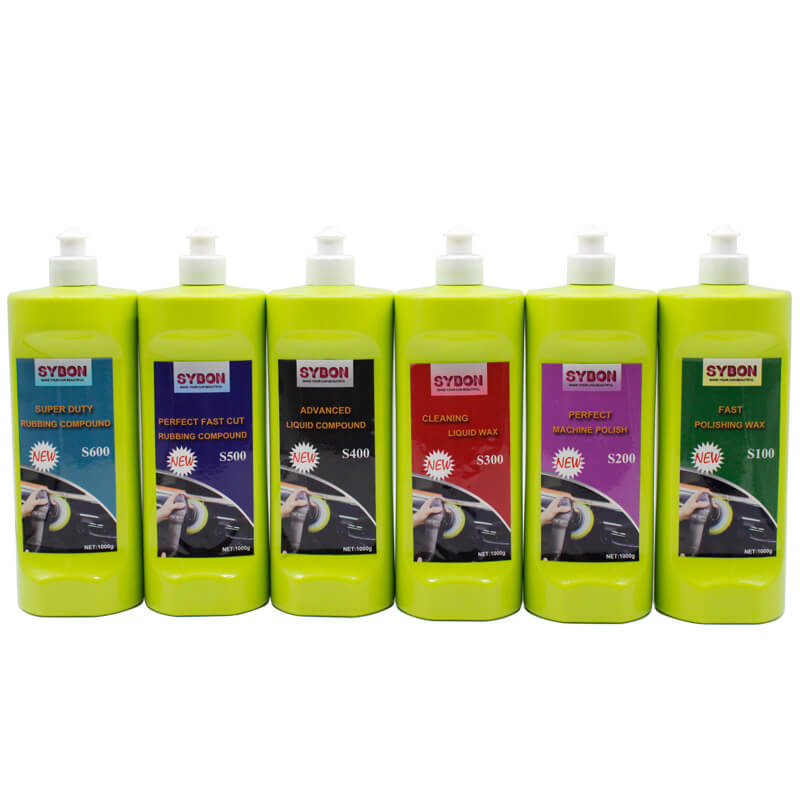Compound Polish Price
Compound polish, an essential product in the automotive, industrial, and household cleaning sectors, plays a crucial role in enhancing the appearance of surfaces by removing imperfections and restoring shine. The pricing of compound polish is a multifaceted aspect influenced by various factors, including quality, brand reputation, ingredients, manufacturing costs, market demand, and competition. Understanding these factors is essential for both manufacturers and consumers to make informed decisions about purchasing and pricing.
Factors Influencing Compound Polish Prices
Quality and Brand Reputation: The reputation of a brand and the perceived quality of its products significantly impact the pricing of compound polish. Established brands with a history of producing high-quality polishes often command higher prices due to consumer trust and loyalty.
Ingredients and Formulation: The composition of a compound polish, including the quality and quantity of ingredients used, directly affects its performance and, consequently, its price. Polishes formulated with premium ingredients or innovative formulations may be priced higher than generic alternatives.
Packaging and Presentation: The packaging and presentation of compound polish play a role in determining its price. High-quality packaging materials, innovative designs, and attractive labeling can contribute to higher production costs and, subsequently, higher prices.
Manufacturing and Production Costs: The cost of manufacturing compound polish encompasses expenses related to raw materials, labor, equipment, and overheads. Complex formulations or specialized production processes may incur higher production costs, which are reflected in the product's price.
Market Demand and Competition: Market demand and competition dynamics influence the pricing strategies adopted by manufacturers. In a competitive market, pricing may be adjusted to align with consumer preferences, competitor pricing, and market trends.
Quality and Brand Reputation
Quality and brand reputation are fundamental factors influencing compound polish prices. Established brands with a history of producing high-quality polishes often command premium prices due to consumer trust and loyalty. Consumers are willing to pay more for products from reputable brands, expecting superior performance and consistent results. Moreover, brands invest in research and development to innovate and improve their formulations, further justifying higher prices.
Ingredients and Formulation
The ingredients and formulation of compound polish directly impact its performance and pricing. Premium polishes are formulated with high-quality abrasives, solvents, surfactants, and additives to deliver superior results with minimal effort. Manufacturers may invest in proprietary formulations or patented technologies, adding value to their products and justifying higher prices. Conversely, lower-priced polishes may contain generic ingredients or lower concentrations, compromising performance and durability.
Packaging and Presentation
The packaging and presentation of compound polish contribute to its perceived value and pricing. Manufacturers invest in high-quality packaging materials, such as durable bottles, tamper-evident seals, and user-friendly dispensers, to enhance product integrity and user experience. Innovative designs, attractive labeling, and informative product descriptions can differentiate polishes in a competitive market and justify premium pricing. However, elaborate packaging and presentation incur additional production costs, which are passed on to consumers through higher prices.
Manufacturing and Production Costs
The cost of manufacturing compound polish encompasses expenses related to raw materials, labor, equipment, and overheads. Premium polishes formulated with high-quality ingredients or innovative technologies incur higher raw material costs. Skilled labor and specialized equipment are required for precise formulation, blending, and quality control processes. Additionally, overhead costs, including facility maintenance, utilities, and regulatory compliance, contribute to the overall production costs. Manufacturers carefully evaluate these expenses to determine pricing strategies that ensure profitability while remaining competitive in the market.
Market Demand and Competition
Market demand and competition dynamics play a crucial role in shaping compound polish prices. Manufacturers monitor consumer preferences, industry trends, and competitor pricing strategies to adjust their prices accordingly. In a competitive market, pricing may fluctuate in response to changes in supply and demand, promotional activities, and seasonal variations. Moreover, the introduction of new products or technologies can influence consumer perceptions of value and impact pricing across the market segment.
Distribution and Retail Markup
The distribution and retail markup further contribute to the final price of compound polish. Manufacturers sell their products to distributors or retailers at wholesale prices, allowing for markups to cover distribution costs, retailer margins, and other expenses. Distributors and retailers may offer discounts or promotions to attract customers and increase sales volume, affecting the overall pricing structure. Additionally, online retail channels may offer competitive pricing and convenience, influencing consumer purchasing decisions and market dynamics.
How to Find the Best Compound Polish for Your Budget
When selecting a compound polish, consumers should consider their budget, specific requirements, and desired outcomes. Assessing factors such as quality, brand reputation, ingredients, and pricing can help identify the best product within a given budget range. Reading product reviews, comparing prices, and seeking recommendations from professionals or trusted sources can further aid in making an informed decision.
Conclusion
In conclusion, compound polish pricing is influenced by various factors, including quality, brand reputation, ingredients, manufacturing costs, market demand, competition, distribution, and retail markup. Understanding these factors is essential for both manufacturers and consumers to navigate the market effectively. By considering the interplay of these elements, stakeholders can make informed decisions about pricing strategies, product offerings, and purchasing choices. Ultimately, the goal is to deliver value to consumers while ensuring profitability and sustainability within the industry.
Source of this article:https://www.sybonbest.com
Get to know us through more channels:





